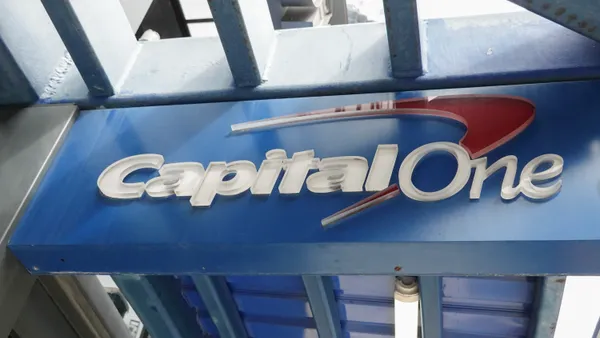Dive Brief:
- Wells Fargo is developing a virtual assistant, named Fargo, that it’s preparing to launch next year after the bank rolls out a revamped mobile app, digital platform leader Michelle Moore said, according to CNBC and American Banker.
- The bank has moved to focus on updating its technology this year. It announced plans last month to embark on a 10-year journey to modernize its cloud infrastructure to align with two service providers, Microsoft and Google. In retrospect, CEO Charlie Scharf, in the bank’s earnings call this month, may have been teasing a 2022 app relaunch, when he said, “We're executing on our work to simplify our products and build compelling offerings tailored to different customer segments.”
- Moore is no stranger to bank virtual assistant development. She helped develop Bank of America’s virtual assistant, Erica, during her 15-year stint there. She left her role as head of digital banking at the end of 2018 and joined Wells Fargo in December 2020.
Dive Insight:
Wells Fargo wants to capitalize on the swell of digital interaction users have undertaken since the beginning of the COVID-19 pandemic. Customer interactions through Bank of America’s Erica, for example, have tripled in the past year to 104.6 million, the Charlotte, North Carolina-based bank reported in its earnings results this month.
Wells counts 27 million active mobile users, trailing both BofA (32.5 million) and JPMorgan Chase (44.3 million), according to CNBC. The San Francisco-based bank has seen 4.2% user growth of the past year, compared with a gain of 6.2% this year at Bank of America in that category, and 10.2% over the same time frame at JPMorgan.
Some of the planned improvements to be rolled out ahead of Fargo’s debut stem from customer feedback.
“Our clients were telling us that our app was not easy to use, it’s not intuitive, there were too many dead ends and clients were getting stuck,” Moore told CNBC.
Payments, for example, are in multiple places on the app, she told American Banker.
“When customers are moving money, whether they're transferring money between accounts, paying bills [or] using Zelle, all of that should be in one place,” Moore said. “So on the bottom navigation bar, we will have a payments hub that can be configurable and customized by clients based on how they interact.”
The bank wants its assistant Fargo to help users pay bills, send money, and offer transaction details and budgeting advice. The app, Moore told CNBC, should be “more than checking balances and moving money.”
“We want to be integrated and we want to help clients do their investments or buy their first house,” she told the network.
But also, the app has to “compete with [users’] last best experience,” Moore told American Banker. So the bank wants to enable its customers outside of financial services, she said.
Moore began work to overhaul the app at the beginning of 2021, with concentration first on “the top 20% of the app that does 80% of the volume,” she told American Banker, and the goal to refresh the rest as time goes on. The bank first studied why customers called Wells’ phone help lines and where the app failed.
As for the virtual assistant’s name, “Fargo” made an obvious fit, Moore said.
"We weren’t trying to create a new brand or persona here,” she told CNBC. “There’s a lot you can do with ‘Fargo.’ Flip the word around, you can ‘Go Far.’ Let Fargo take you far.”
Wells Fargo’s tech revamp comes, too, after it lost its crown last quarter as the bank with the nation’s largest brick-and-mortar footprint. It counted 4,796 branches as of Sept. 30 — second to JPMorgan’s 4,854, according to the companies’ latest earnings reports.













